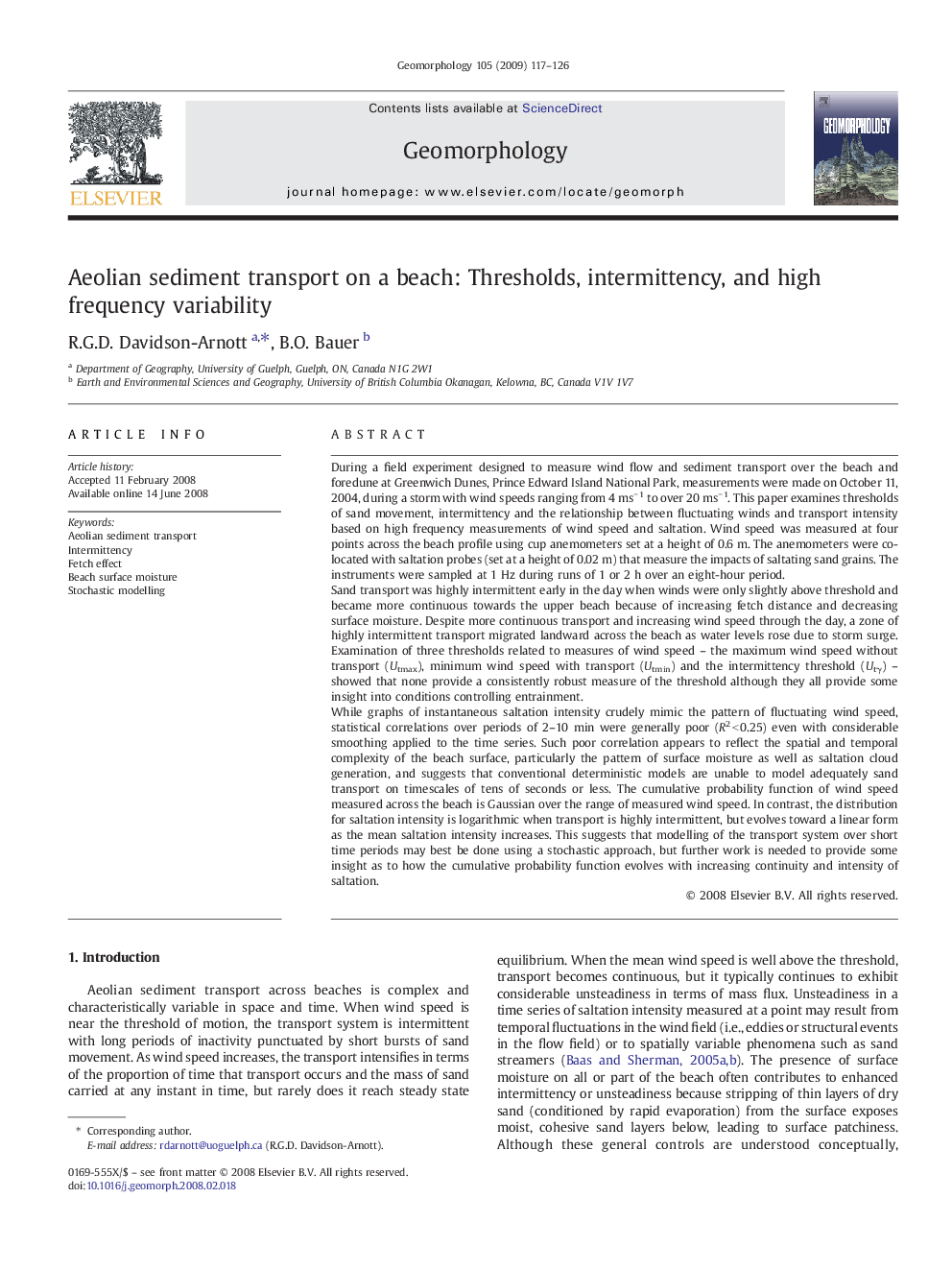| Article ID | Journal | Published Year | Pages | File Type |
|---|---|---|---|---|
| 4686630 | Geomorphology | 2009 | 10 Pages |
During a field experiment designed to measure wind flow and sediment transport over the beach and foredune at Greenwich Dunes, Prince Edward Island National Park, measurements were made on October 11, 2004, during a storm with wind speeds ranging from 4 ms− 1 to over 20 ms− 1. This paper examines thresholds of sand movement, intermittency and the relationship between fluctuating winds and transport intensity based on high frequency measurements of wind speed and saltation. Wind speed was measured at four points across the beach profile using cup anemometers set at a height of 0.6 m. The anemometers were co-located with saltation probes (set at a height of 0.02 m) that measure the impacts of saltating sand grains. The instruments were sampled at 1 Hz during runs of 1 or 2 h over an eight-hour period.Sand transport was highly intermittent early in the day when winds were only slightly above threshold and became more continuous towards the upper beach because of increasing fetch distance and decreasing surface moisture. Despite more continuous transport and increasing wind speed through the day, a zone of highly intermittent transport migrated landward across the beach as water levels rose due to storm surge. Examination of three thresholds related to measures of wind speed – the maximum wind speed without transport (Utmax), minimum wind speed with transport (Utmin) and the intermittency threshold (Utγ) – showed that none provide a consistently robust measure of the threshold although they all provide some insight into conditions controlling entrainment.While graphs of instantaneous saltation intensity crudely mimic the pattern of fluctuating wind speed, statistical correlations over periods of 2–10 min were generally poor (R2 < 0.25) even with considerable smoothing applied to the time series. Such poor correlation appears to reflect the spatial and temporal complexity of the beach surface, particularly the pattern of surface moisture as well as saltation cloud generation, and suggests that conventional deterministic models are unable to model adequately sand transport on timescales of tens of seconds or less. The cumulative probability function of wind speed measured across the beach is Gaussian over the range of measured wind speed. In contrast, the distribution for saltation intensity is logarithmic when transport is highly intermittent, but evolves toward a linear form as the mean saltation intensity increases. This suggests that modelling of the transport system over short time periods may best be done using a stochastic approach, but further work is needed to provide some insight as to how the cumulative probability function evolves with increasing continuity and intensity of saltation.
